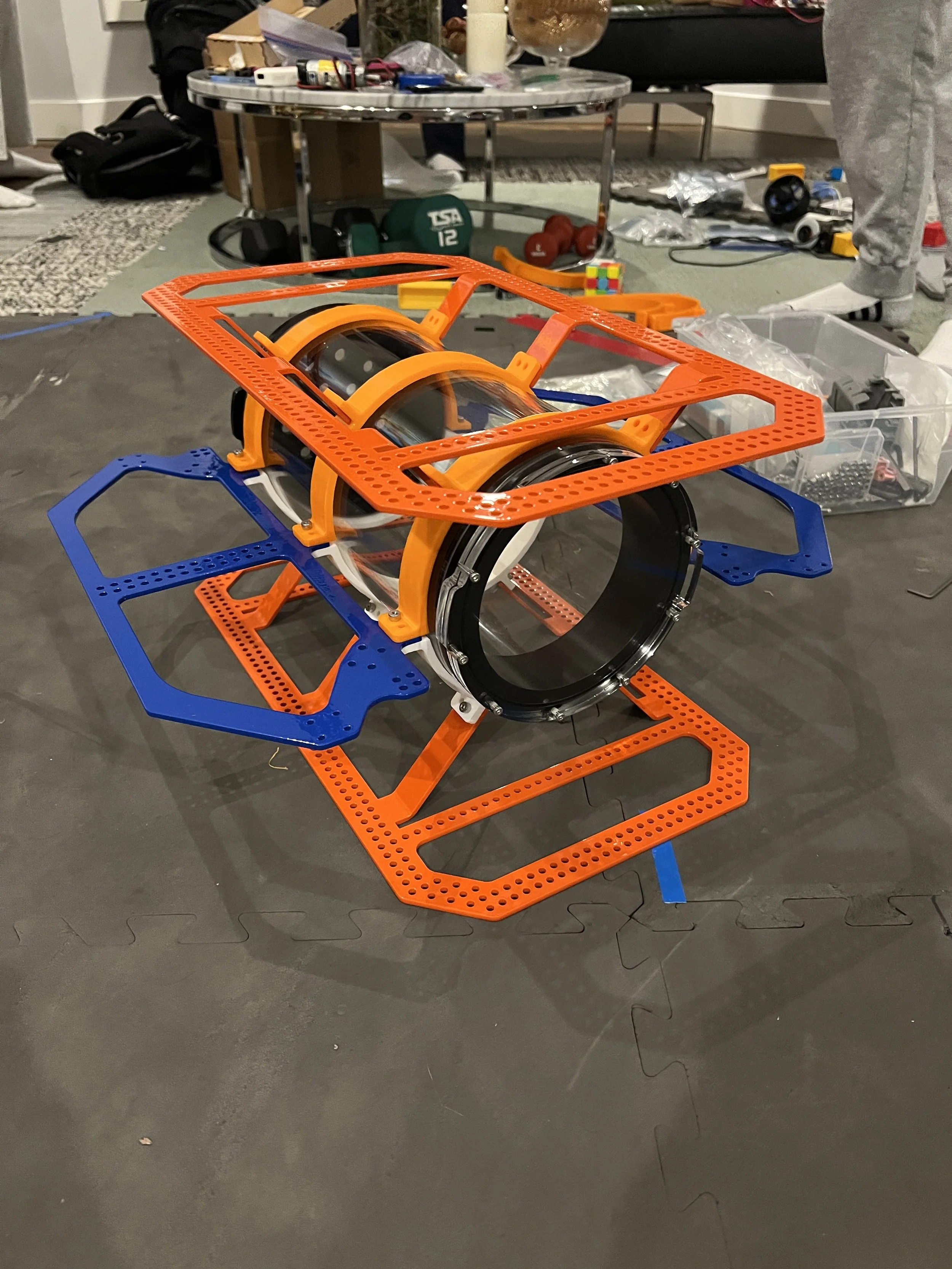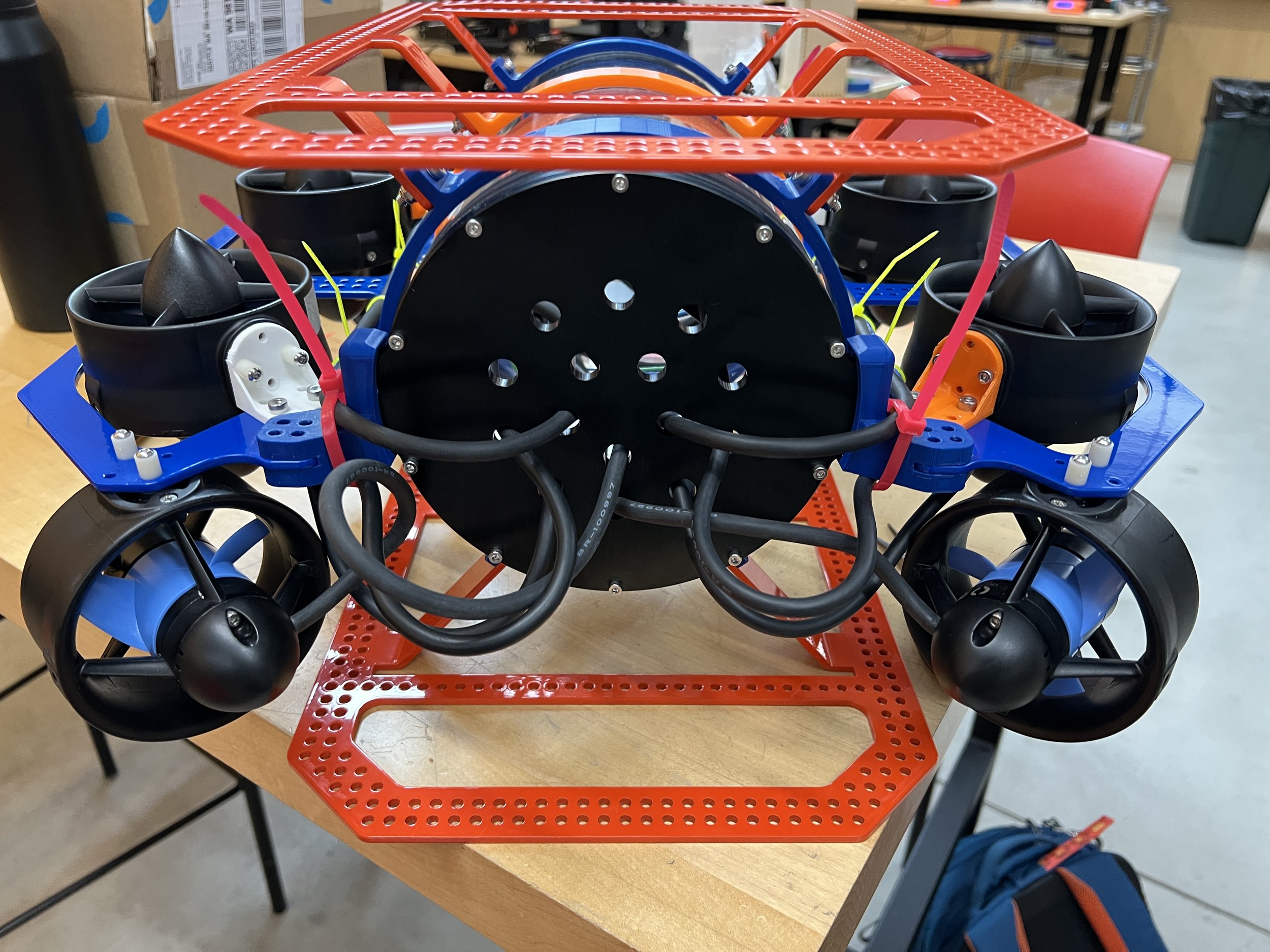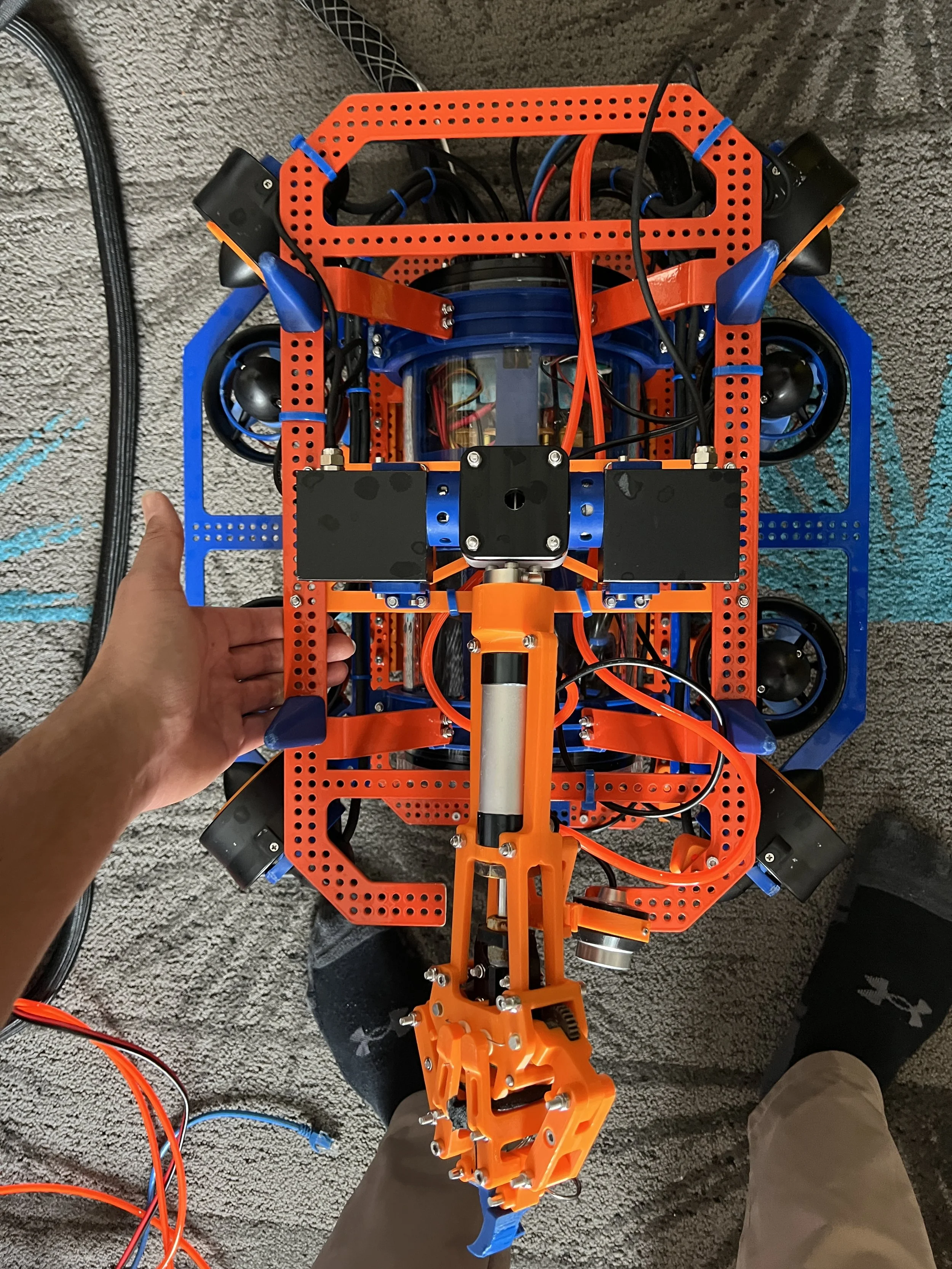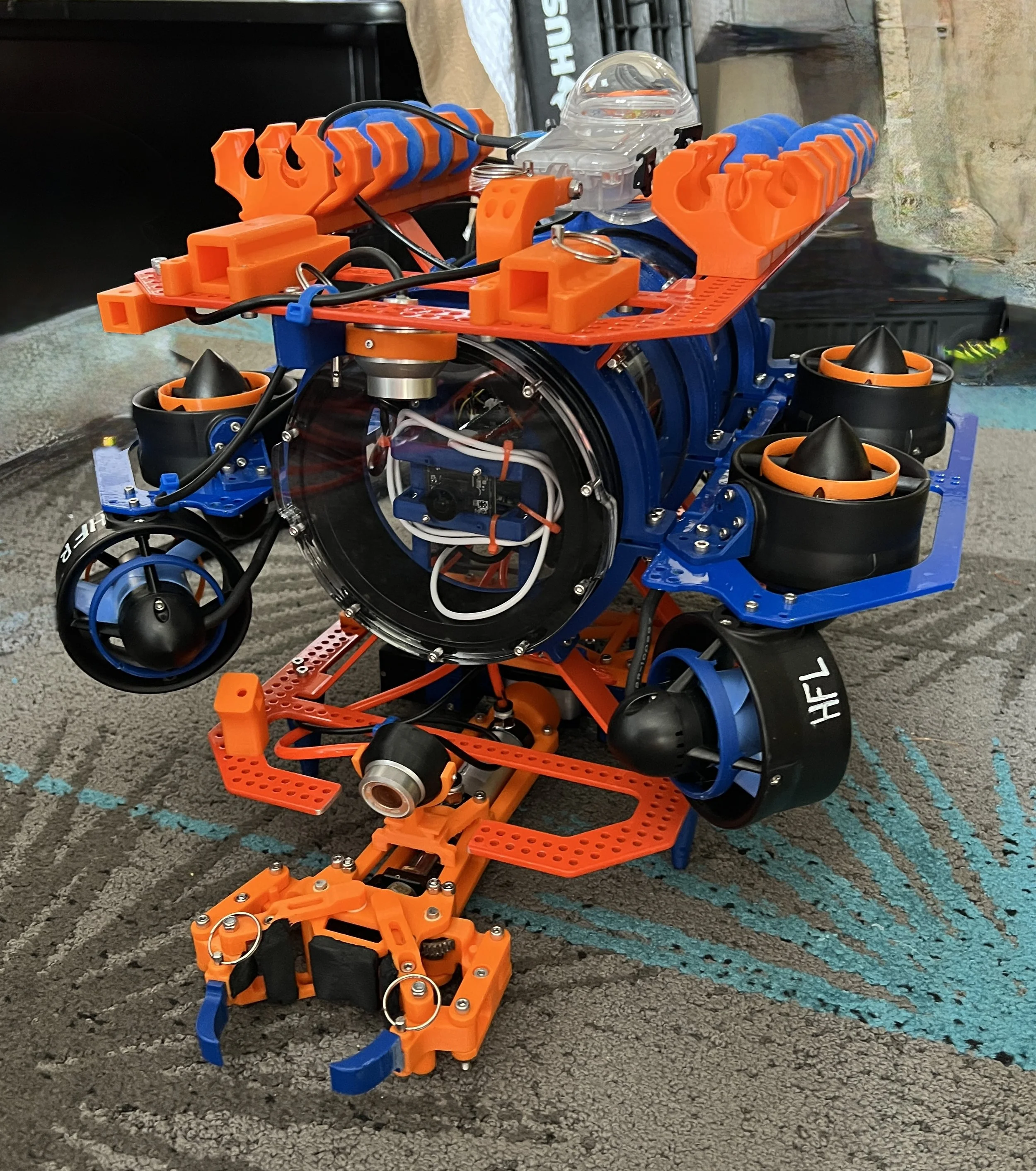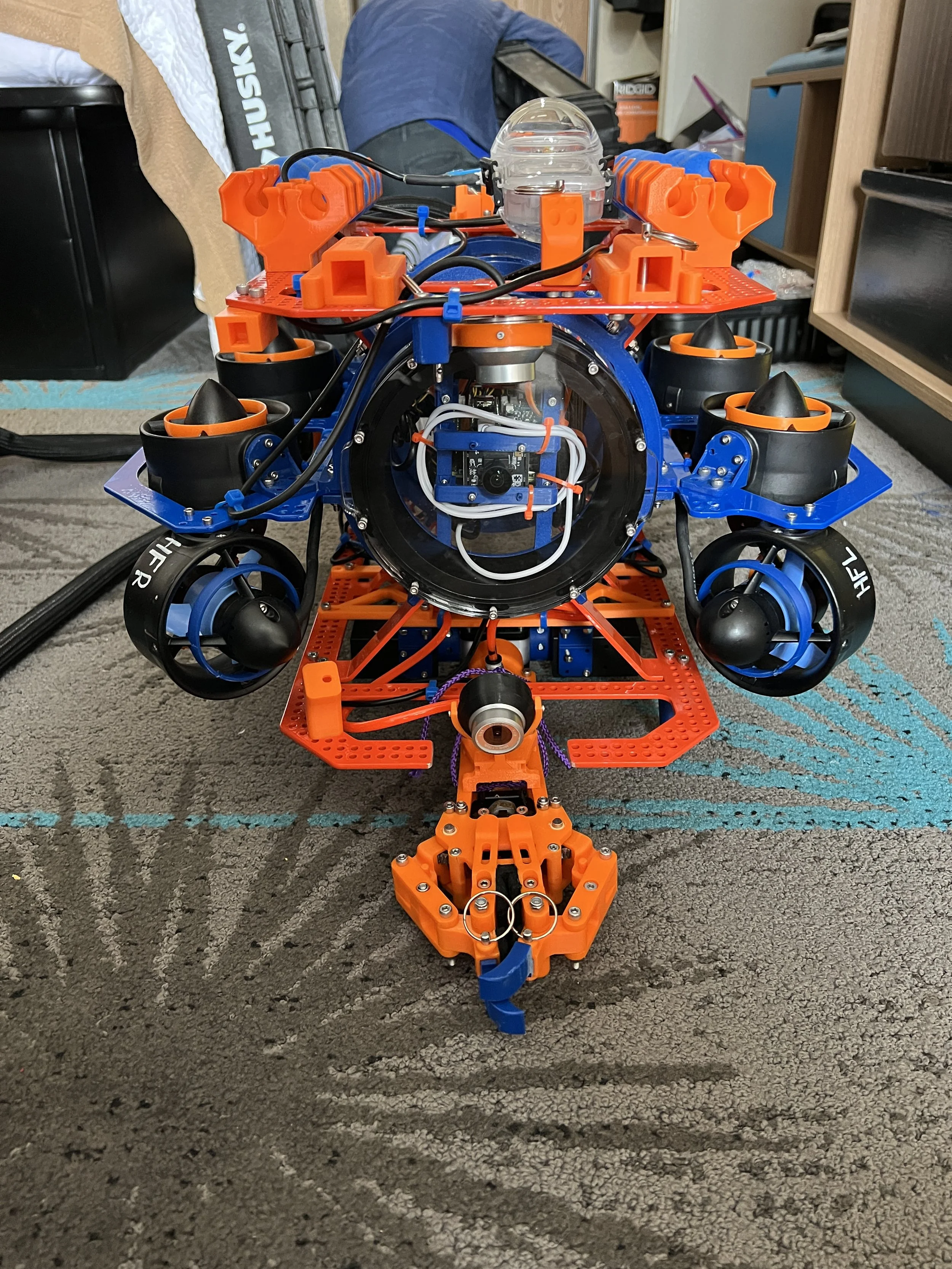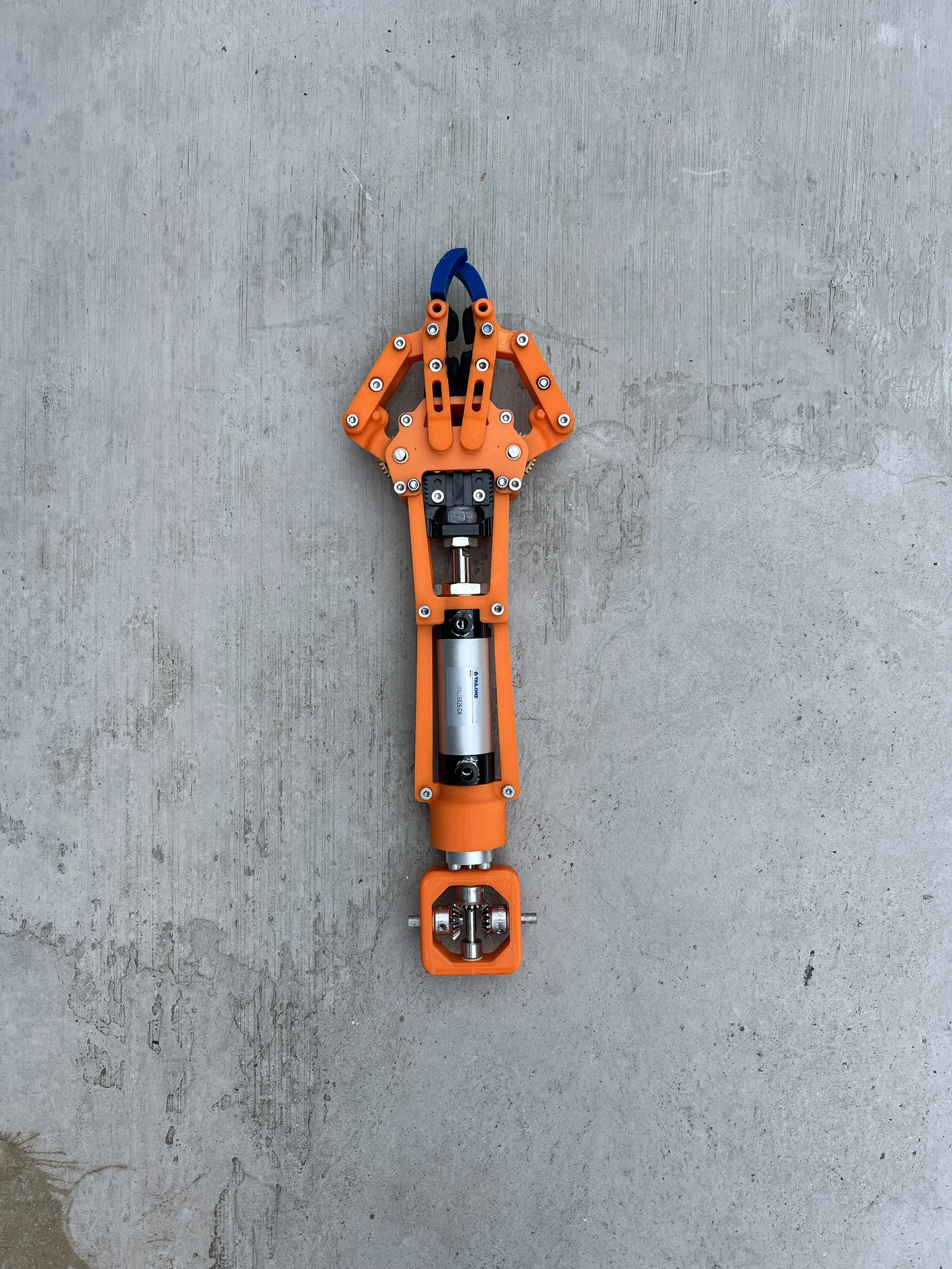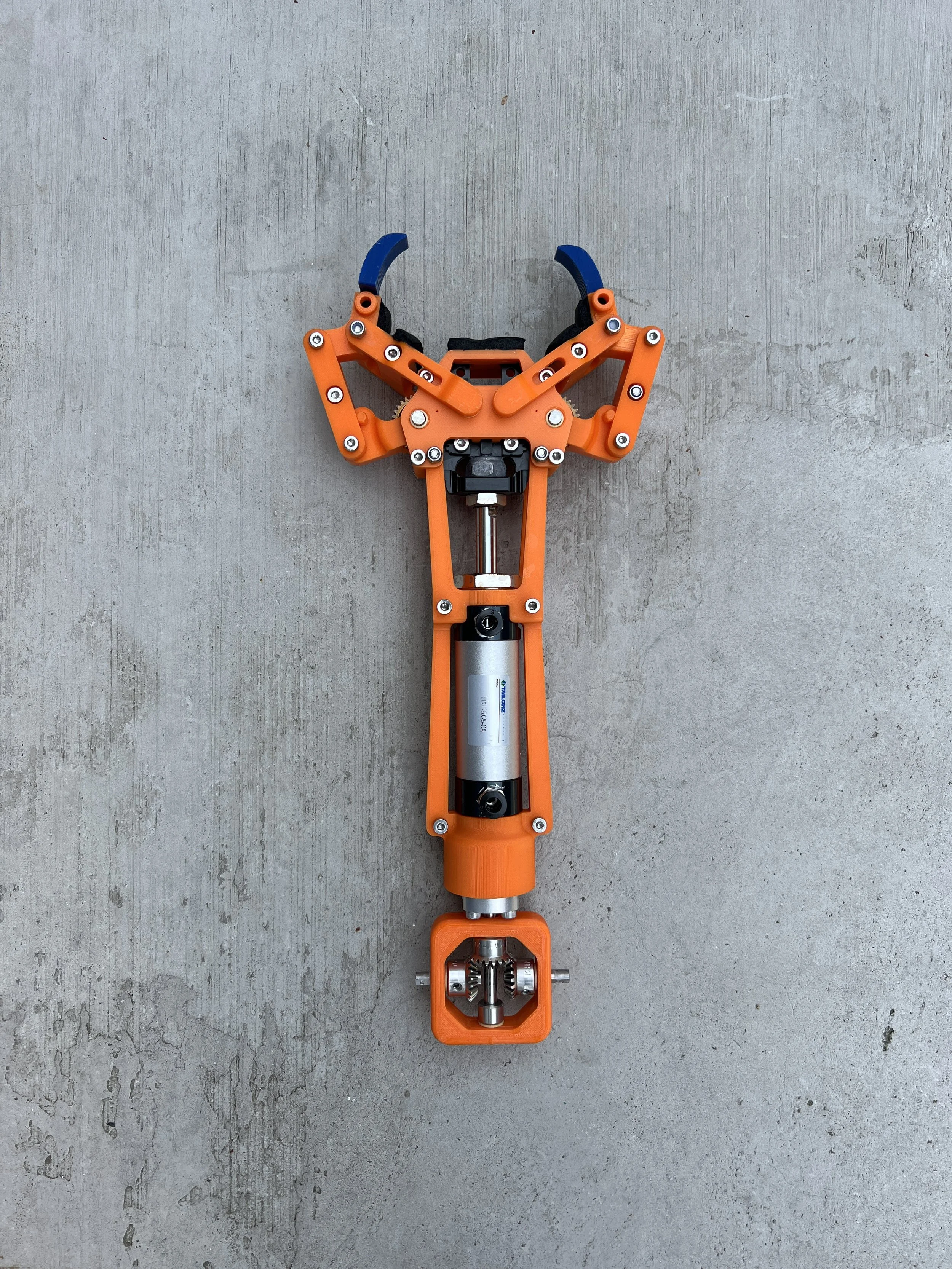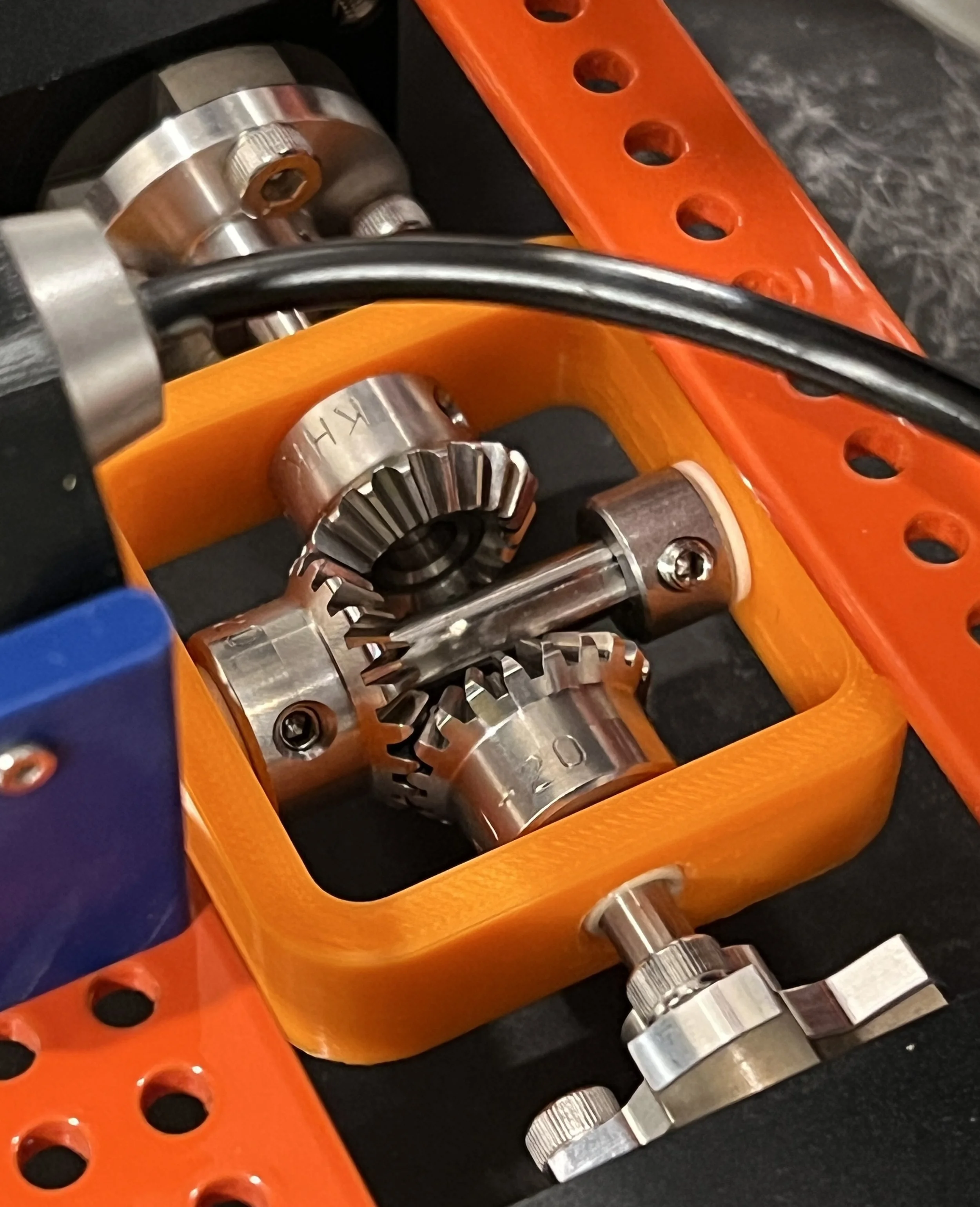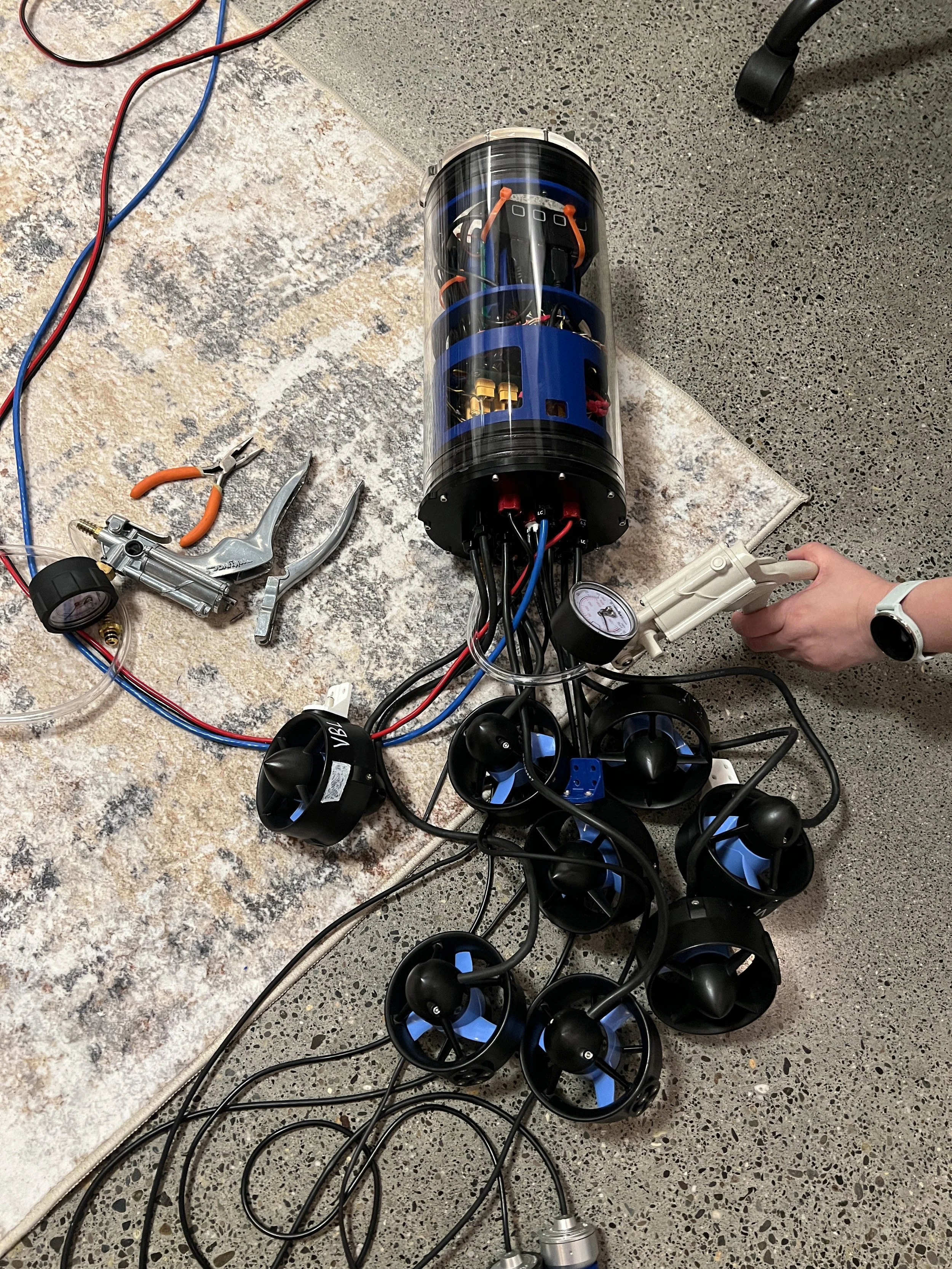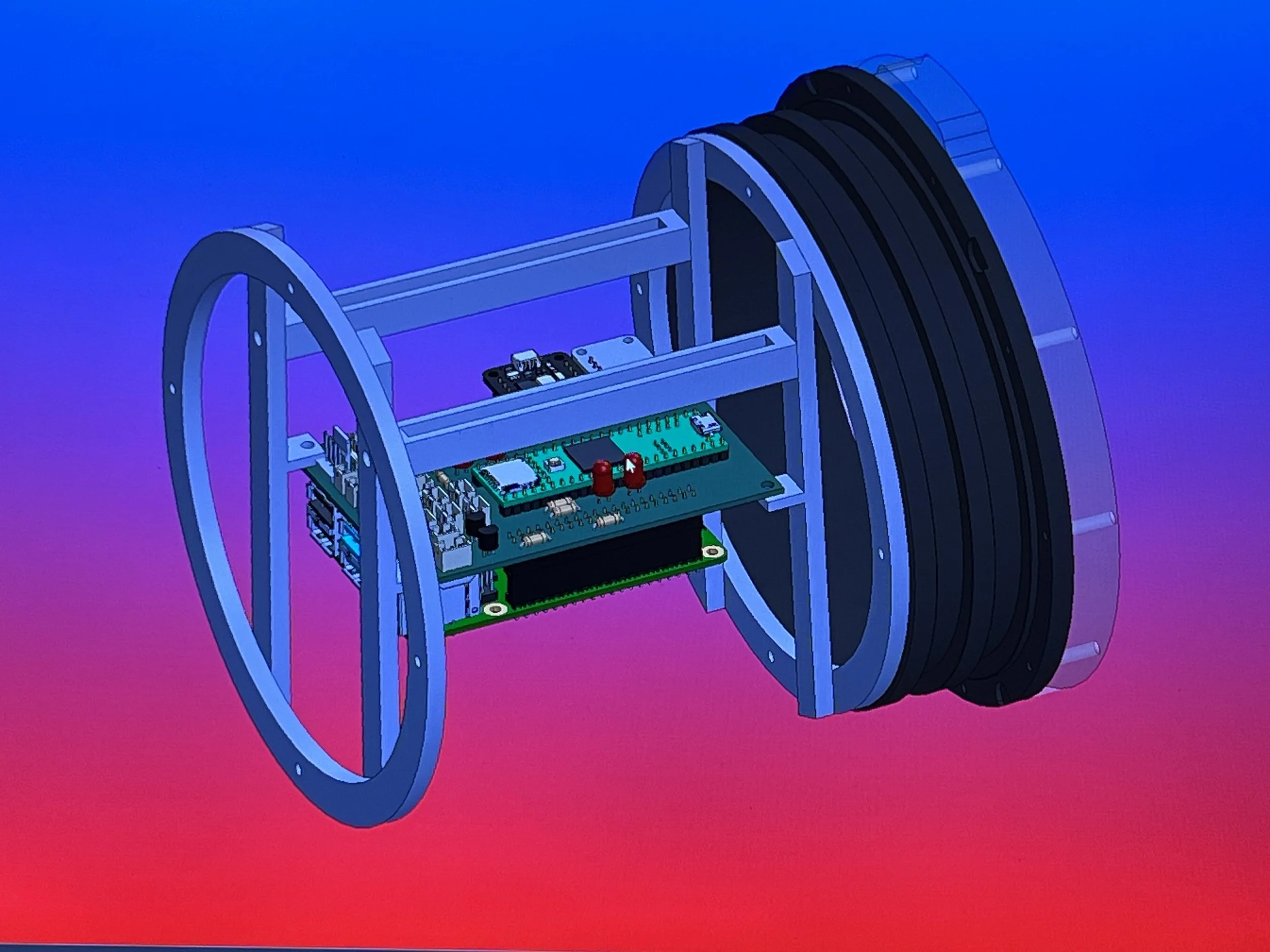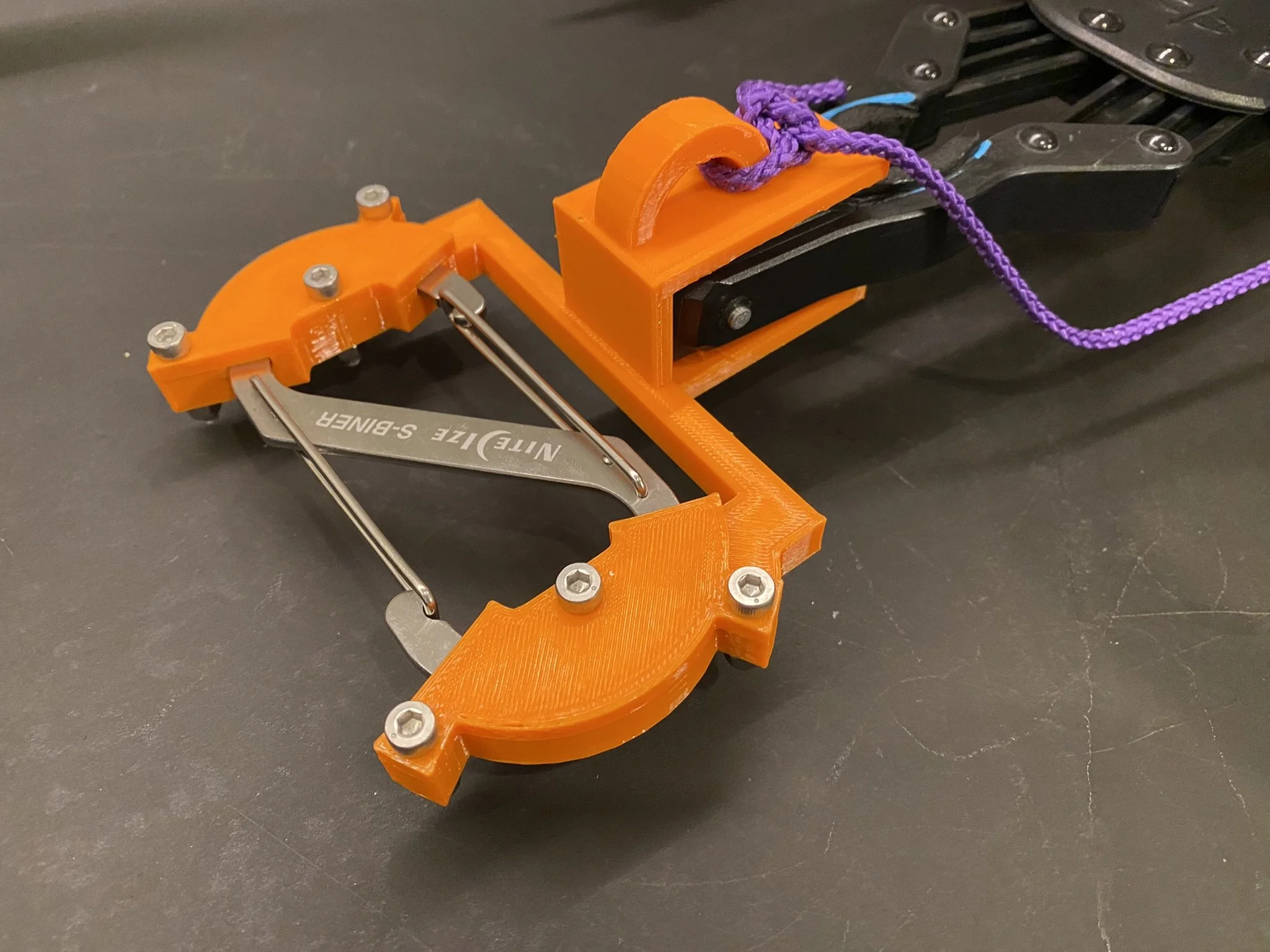
Dragonfly
Coral Crusader’s award-winning modular ROV advancing ocean innovation
Abstract
The Coral Crusaders, a third-year independent engineering team from Redmond, Washington, designed and built Dragonfly, a high-performance Remotely Operated Vehicle (ROV) created to protect and study marine environments. The team’s innovation and technical excellence earned them 1st place at the Pacific Northwest Regional MATE ROV Competition, 4th place at the World Championships, and the Marketing Display Award for outstanding presentation and engineering communication.
Built over 1,497 hours by ten student engineers, Dragonfly embodies the team’s design principles of modularity, movement, and manageability. Its custom-machined 5052-H32 and 6061-T6 aluminum frame is lightweight, durable, and powder-coated for corrosion resistance, featuring evenly spaced mounting holes for flexible configuration of cameras, tools, and ballast. Powered by eight Blue Robotics T200 thrusters, Dragonfly achieves six degrees of freedom, providing precise control for tasks such as inspecting shipwrecks, collecting jellyfish, and performing offshore wind farm maintenance.
Its differential wrist enables both rotation and tilt, while the underactuated pneumatic gripper adapts to objects of varying shapes—ideal for delicate operations like coral repair or epoxy application. Four low-latency HD cameras, integrated with a custom software system powered by a Raspberry Pi 5 and Teensy 4.1 microcontroller, deliver video feedback in under 60 milliseconds, giving pilots exceptional precision. Safety and serviceability are prioritized through a humidity-based auto-shutdown system, 3D-printed thruster guards, and a strain-relieved tether.
Led by senior students Vehd Reddy (CEO & Mechanical lead), Dylan Wu (COO & Electrical lead), and Rishi Pudipeddi (CTO & Software Lead), the Coral Crusaders operate across mechanical, electrical, software, and business divisions. They used rapid prototyping, CNC machining, 3D printing, and Kenesto’s Product Data Management software to coordinate complex builds. With Dragonfly, the team proved that student-led engineering can deliver professional-grade innovation—advancing the future of ocean exploration and sustainability through thoughtful design and collaboration.
